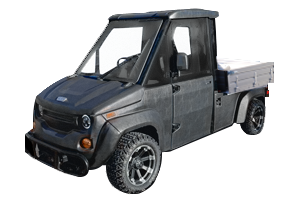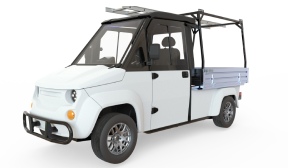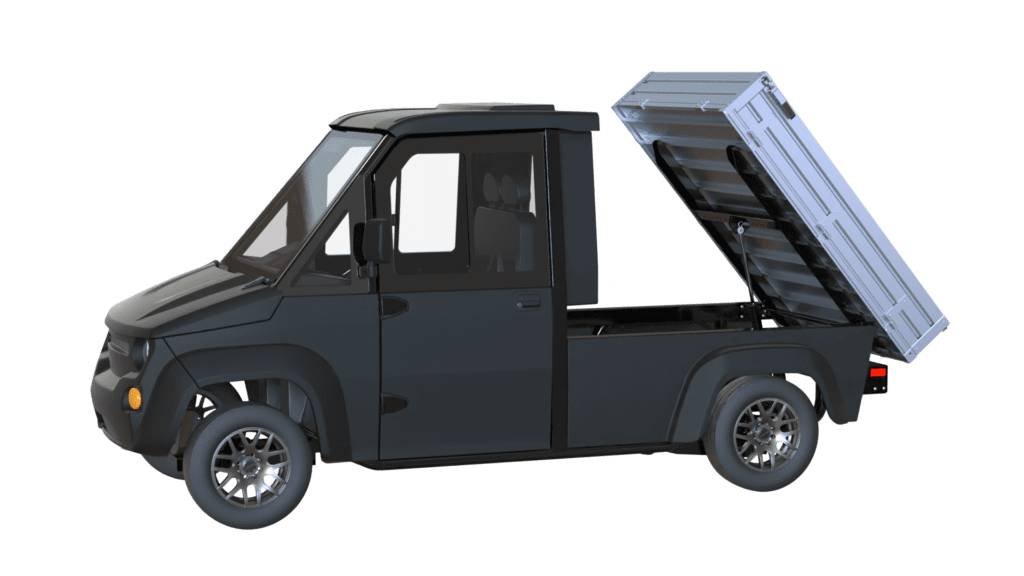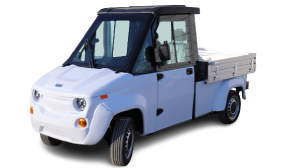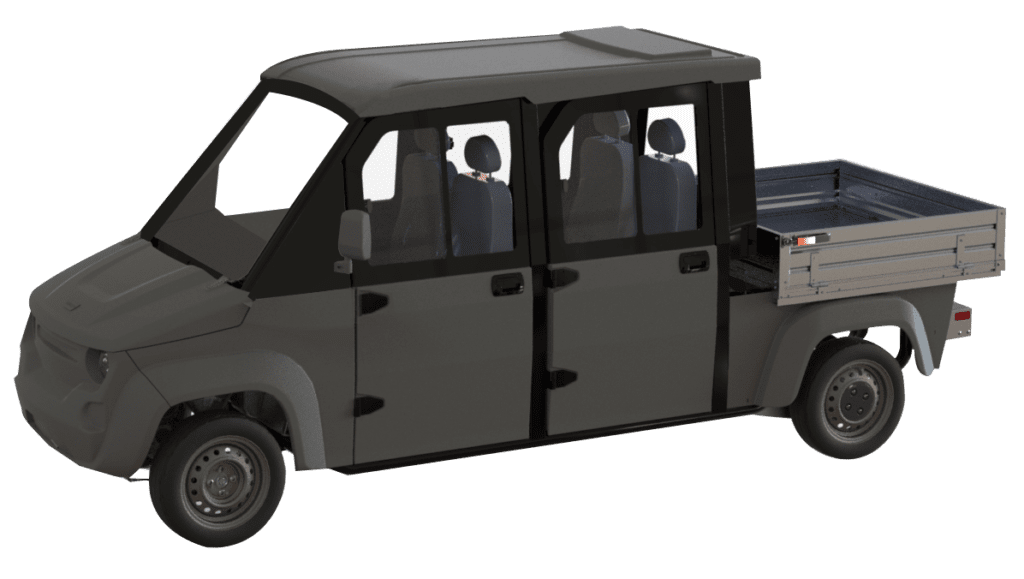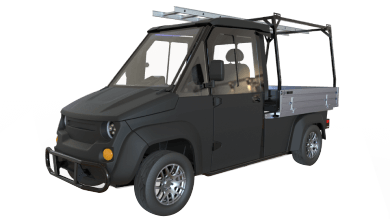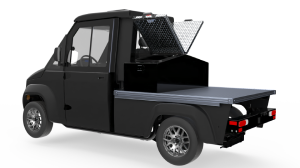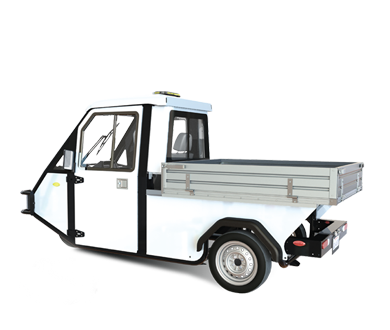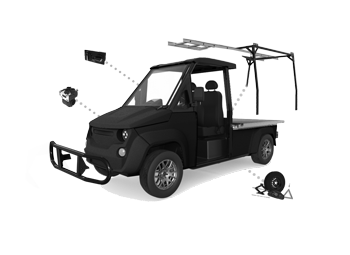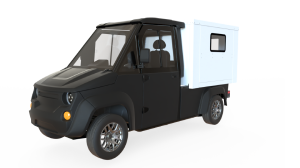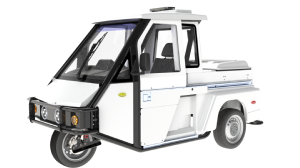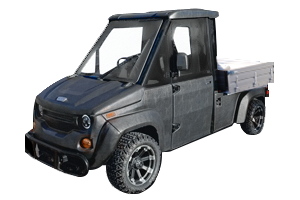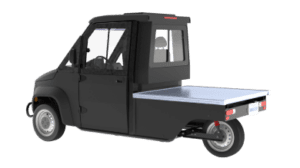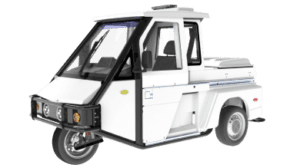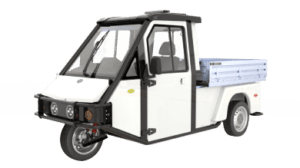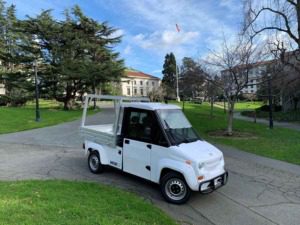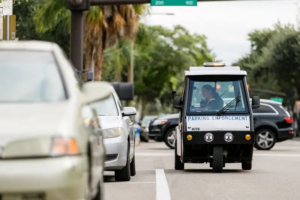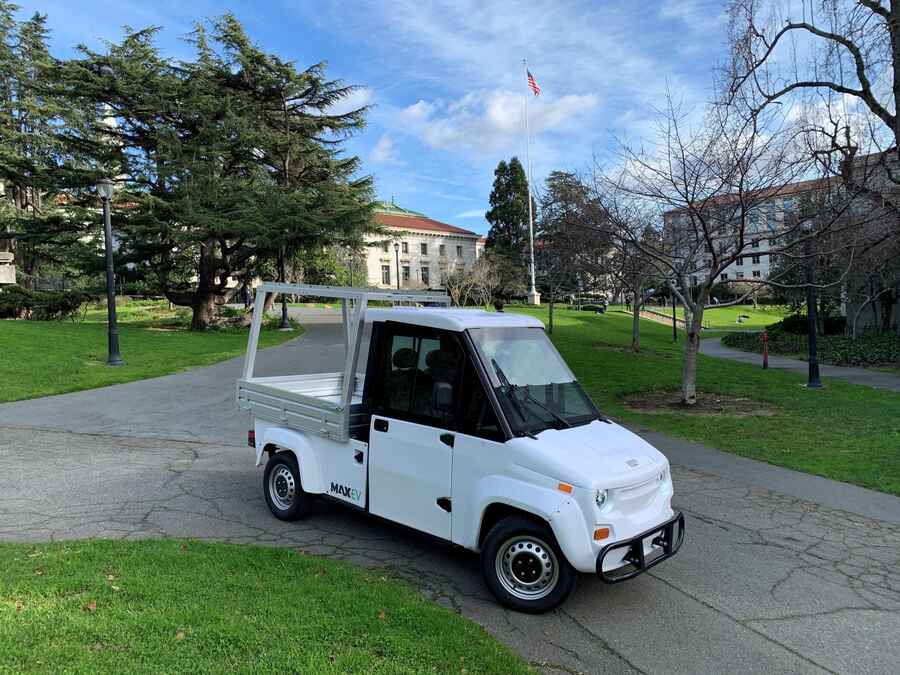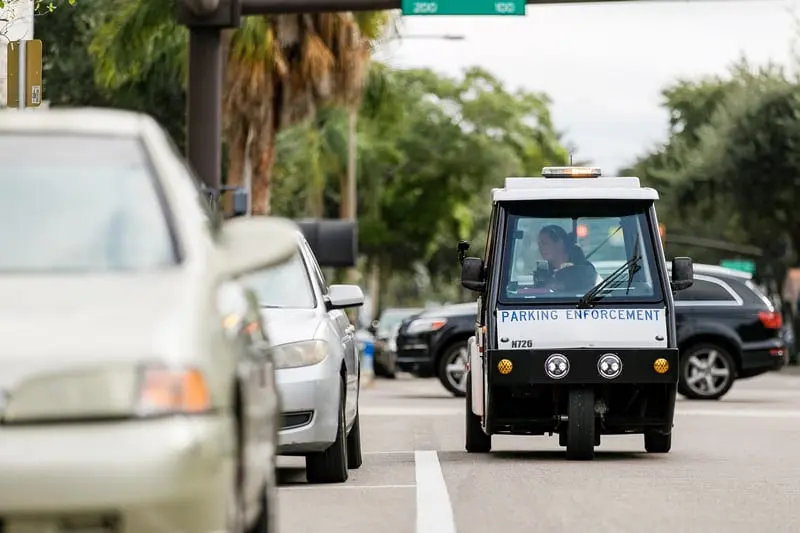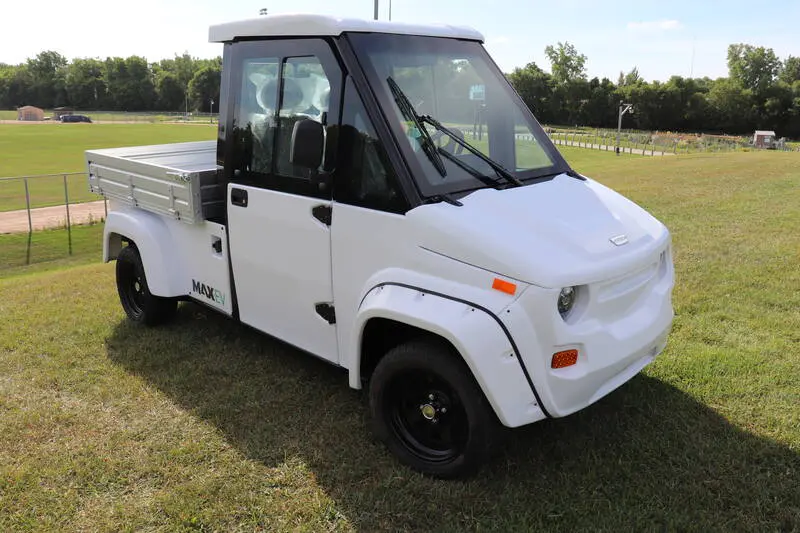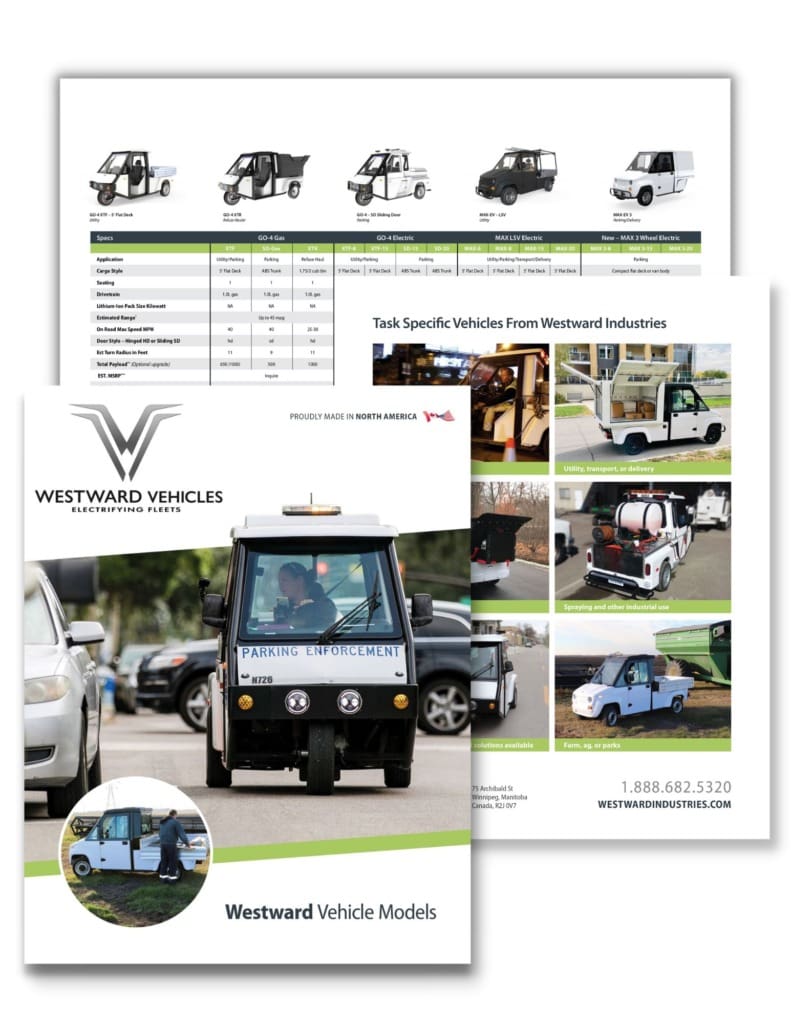Universities, governments, and associated organizations are constantly looking for ways to lower their carbon footprint and set an example for the rest of the economy. Many are now trying to hit net zero targets and tame the climate beast. And that’s spurring interest in electric utility vehicles (EUVs).
EUVs are nothing like the golf carts or milk floats of the past that relied on low-power, short-range, and heavy, inefficient lead-acid batteries. Today’s vehicles are significantly more capable, drawing on the tremendous technological advances of the last ten years.
4 wheel utility vehicles are a type of electric utility vehicle that is designed for tough jobs and rugged terrain. These mid-size machines are designed to address various tasks, from hauling heavy loads to exploring off-road trails. They are equipped with advanced features and built to withstand the harshest conditions. They are perfectly designed to handle the toughest jobs, whether it is traversing steep inclines, navigating through mud and snow, or hauling heavy cargo.
Authorities typically class on-road versions of electric 4 wheel utility vehicles as Low Speed Vehicles. Most states allow operators to drive these vehicles on roads with speed limits of 35 mph or less.
They tend to be more versatile, flexible, and cheaper to run than their larger carbon-dioxide-emitting brethren. And because they feature more advanced batteries, they tend to have a considerably longer range than their lead-acid forebears. As such, these vehicles are becoming increasingly popular fleet choices.
As you might expect, today’s low-speed vehicles have all the functionality of regular cars and trucks. Models come equipped with parking brakes, turn signals, seatbelts, mirrors, and powerful headlights. They run considerably faster than conventional golf carts, which are limited to speeds of between 15 and 20 mph. And, unlike these caddy-carrying electric vehicles, EUVs are street-legal and do not require any dramatic modifications.
The Evolution of Utility Vehicles
Over the years, utility vehicles have evolved significantly to meet the diverse needs of various industries. Initially designed for agricultural purposes, these 4 wheel utility vehicles have expanded their capabilities to serve a wide range of applications. From farming and construction to maintenance and landscaping, utility vehicles have become an indispensable tool for professionals in different fields.
The emergence of the MAX-EV 4 Wheel LSV has further revolutionized the industry by offering enhanced stability, control and versatility. With its four-wheel drive systems and robust suspensions, this ride can tackle challenging terrain and transport heavy loads with ease. Whether you’re working on a construction site, maintaining a large property or exploring off-road trails, the MAX-EV 4 Wheel LSV model is the ideal companion for getting the job done efficiently and effectively.
Benefits of Electric Utility Vehicles
The following are a few benefits of EUV inherent versatility for universities, governments, and private sector firms.
1. Street Legal
Electric Utility Vehicles are street-legal on most roads in major cities, including suburban streets and gridiron roads closer to the city center. As long as the public road has a speed limit of 35 mph or less, you can confidently drive your utility vehicles (UTVs) without any restrictions.
2. Nearly Maintenance-Free
Maintenance for electric utility vehicles is significantly reduced compared to traditional ICE engines. EUV drive trains contain a fraction of the parts found in typical gas engines, meaning ongoing maintenance is greatly reduced and close to maintenance-free. Keeping them in good working condition requires occasional tire changes, checking brakes, and leaving the electric utility vehicle plugged in over the weekend. The onboard battery management system can keep the battery healthy long-term. Our electric utility vehicles plug in to 110v or 220v. We also offer a J1772 port and cable.
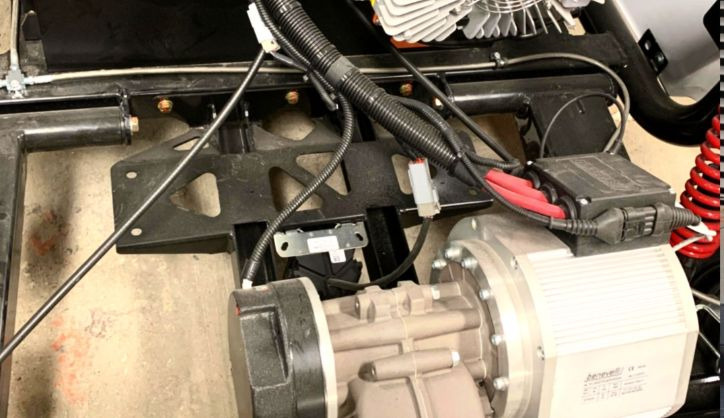
3. Great Acceleration
Electric utility vehicles are equipped with long-lasting Lithium-Ion batteries that offer greater energy density and minimal degradation. This means that you can rely on consistent power throughout the duration of the charge. Unlike older models like milk floats and golf carts that struggled with acceleration, modern utility vehicles excel in this department, thanks to the advancements in battery technology. With powerful batteries, you can confidently take on any task.
4. Opportunity charge as needed
It’s effortless to charge electric utility vehicles in your fleet. Westward vehicles like the MAX-EV plug into 110v or 220v, and we offer several J1772 cables or wall-mounted versions to pick from. Opportunity charge is no problem with Lithium-Ion technology. The opportunity to charge your machine as needed ensures that you can keep it powered up and ready for action at all times.
5. Functions In Cold Weather
Electric utility vehicles can function quite well in colder weather. In sub-freezing weather, you will notice a reduction of the available range, but the vehicle’s performance is still good. To ensure optimal performance, it is recommended to charge your vehicle indoors in extremely cold temperatures. With these precautions in place, you can boost your confidence in relying on your utility vehicle, regardless of the weather conditions.
6. Durability and Versatility
An electric utility vehicle is built to withstand the toughest conditions and environments. With their rugged construction and durable components, these vehicles can handle any trail in extreme weather conditions and perform heavy-duty tasks. From navigating muddy trails to traversing rocky landscapes, an electric utility vehicle provides the durability and versatility needed to tackle any job.
7. Versatile Attachments and Accessories
To further enhance their capabilities, electric utility vehicles can be equipped with a wide range of attachments and accessories. From cargo boxes and dump beds to snow plows and winches, these vehicles can be customized to meet the specific needs of different industries. You can use the cargo box to transport a wide range of items, including tools, equipment, supplies, and personal belongings. With the right attachments, an electric utility vehicle can perform a multitude of tasks, increasing efficiency and productivity.
Westward's Electric Utility Vehicles
When it comes to electric utility vehicles, Westward Vehicles is a name you can trust. With our commitment to quality and innovation, Westward has become a leading provider of utility vehicles for a wide range of industries. Whether you need a utility vehicle for work or play, Westward has the perfect solution for you.
1. Versatile Models for Every Task
Westward offers a diverse range of utility vehicle models, each designed to address specific needs and tasks. From compact and nimble models perfect for navigating tight spaces to larger and more powerful models capable of handling heavy loads, there is a Westward utility vehicle to suit every requirement. Choose from various models and select the one that best fits your needs.
2. Built to Last
Durability is a key feature of Westward’s utility vehicles. These machines are built to withstand the toughest conditions and the most demanding tasks. With robust construction, reinforced chassis and heavy-duty components, Westward electric utility vehicles are ready to tackle any job with confidence. Whether you’re hauling equipment, transporting materials or navigating rough terrains, you can count on the durability and strength of Westward’s utility vehicles.
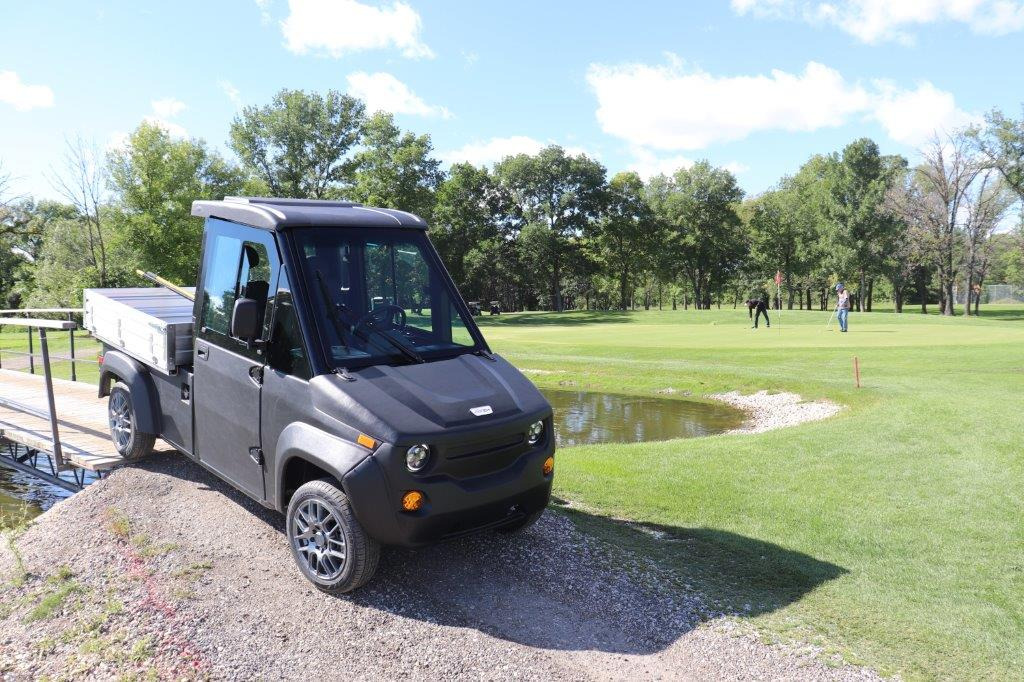
3. Unmatched Control and Handling
The average gas price has risen worldwide, with the average price of a gallon of gasoline in the United States being over $3.70. Therefore, MAX-EV is the go-to option for fleets, aiming to save on fuel costs while maximizing sustainability. Its efficient battery capacity and design can be a financial asset to your operations.
4. Accessories to Enhance Your Experience
To further enhance the versatility and functionality of your utility vehicle, Westward offers a wide range of accessories. From cargo boxes and attachments to roof racks and winches, you can customize your utility vehicle to fit your specific needs. These accessories are designed to seamlessly integrate with your vehicle, providing added convenience and utility. Whether you need to transport tools, carry equipment, or enhance the storage capacity of your utility vehicle, Westward has the accessories to help you get the job done.
Real-world Testimonials

“The Go4 quite simply is the most suitable parking enforcement vehicle operating today. The vehicle is the most maneuverable parking enforcement vehicle and affords the enforcement officer a high degree of safety and comfort. We have tested other vehicles but continue to return to the Go4 as it provides the greatest overall return on investment.”
Mark Lyons CAPP
Co-Chair International Parking Institute, Parking Division General Manager – City of Sarasota
Incentives and Rebates: Maximize Your Savings with MAX-EV 4 Wheel Utility Vehicles
Take advantage of tax credits and other incentives that amplify MAX-EV’s impressive cost-effectiveness. Certain States and or Provinces offer quite a variety of local grants or tax credits, also, check with your local Air Pollution board for any available grants.
Conclusion
In conclusion, Westward’s 4 wheel utility vehicles are your ultimate solution for versatility, efficiency, and durability! Equipped with powerful engines, robust suspensions, and a wide range of accessories, these vehicles can tackle any task with ease. Whether you’re working in construction, agriculture, maintenance, or simply enjoying off-road adventures, an electric utility vehicle will provide the power, control, and reliability you need to get the job done. You can customize Westward’s electric utility vehicles for work or play.
So, whether you’re hauling heavy loads, exploring rugged terrains or simply looking for a reliable and versatile vehicle, an electric utility vehicle is the perfect choice. Invest in an electric utility vehicle today and experience the power, control, and efficiency that these electric utility vehicles have to offer.
Westward Vehicles is your number-one-stop shop for electric utility vehicles. We offer different types of vehicles, including the Max 4 wheel LSV, GO-4 XTF, GO-4 XTR, GO-4 Sliding Door, and more! Contact Westward Vehicles to learn more about our electric utility vehicles, accessories, and special offers.
FAQs
The MAX-EV offers unmatched cost-efficiency due to its advanced NCM battery technology, PMAC magnetic motors, and energy-efficient engineering. The car has a long lifespan and low operating costs which sets it apart from competitors.
MAX-EV champions sustainability through zero-emission tail-pipe operation and energy-efficient design. Its use of recyclable materials and regenerative braking further minimize its environmental footprint.
While MAX-EV boasts low operational costs and low on-going maintenance costs. Each MAX-EV comes standard with driveline regen for capturing energy from the vehicles momentum and storing it back in the battery. This function allows even the brakes to last longer than for any ICE alternative.
Fleets can achieve significant cost savings and improve sustainability by incorporating MAX-EV. Its low maintenance, operational efficiency, and fleet management features make it an optimal choice for bulk operations.
MAX-EV requires minimal maintenance, primarily focused on battery care and basic mechanical checks. The reduced maintenance needs contribute to the vehicle’s overall cost-efficiency. Typical battery care simply involves plugging in the vehicle over a weekend to allow the on-board battery management system to balance all battery cells to maintain long term health.
By understanding these key facets, you’ll be well-equipped to make an informed decision about incorporating MAX-EV into your lifestyle or fleet operations.
Electric vehicles (EVs) boast lower operating costs due to highly reduced charging versus fuel expenses and minimal maintenance. Their energy-efficient design and potential for renewable energy use contribute to their overall cost-efficiency compared to gas vehicles.
Data accuracy, static variables, and limited scope constrain calculators. For instance, they may not account for fluctuating fuel prices or additional costs like maintenance. Always consider these factors for a comprehensive financial picture. These are estimates and each scenario may require further analysis, contact us at Westward for any further dialogue.
Armed with this information, you can make a more informed decision when evaluating the cost-efficiency and reliability of electric vehicles and associated calculators.
If well-maintained, your 4 wheel utility vehicles can last for upwards of 5 to 8 years before battery packs or major components need to be replaced.
If you can keep your electric 4 wheel utility vehicles within an enclosed space, it will help extend the battery’s lifetime and reduce wear and tear on the vehicle’s components. Alternatively, charging at regular intervals will help to increase the battery life.
A J1772 charger is the most effective way to charge your electric 4 wheel utility vehicles.
We exclusively utilize automotive-grade components for our vehicles. The electric 4 wheel utility vehicles are produced in North America and undergo thorough testing by highly experienced technicians.
Yes, we have many dealers around North America, and we offer Leasing . To learn more, click here.
Westward Vehicles distinguishes itself in the competitive 4 wheel utility vehicles market through a triad of core competencies: sustainability, technological innovation, and adaptability. At the heart of Westward’s value proposition is an uncompromising commitment to environmental responsibility.
Unlike other manufacturers that may offer electric models as an afterthought, Westward integrates sustainability into the very DNA of its products, from eco-friendly materials to energy-efficient design.
Technologically, Westward stands at the forefront of the industry.
The electric drivetrains in their utility trucks are fitted with permanent magnetic advanced motors powered by long-lasting Lithium-ion batteries that range from 6KW to 20KW. These cutting-edge features enable not just superior performance but also contribute to lower lifetime operational costs for the customer.
Integrating these motors with state-of-the-art technologies like regenerative braking and real-time data analytics differentiates Westward from competitors who might still be relying on outdated systems.
The adaptability of Westward’s electric vehicle further enhances its market positioning. For example, the MAX-EV model offers a variety of configurations, including a 5-foot flat deck with clamping walls and a ladder rack, to cater to a diverse range of needs spanning farming, delivery, utilities, and maintenance.
This customization enables clients to tailor the vehicle to specific job requirements, thereby improving operational efficiency and client satisfaction.
In summary, Westward Vehicles is not merely a supplier of electric utility trucks but a comprehensive, sustainable mobility solutions provider. The company’s unique blend of sustainability, technological prowess, and customization makes it a go-to choice for businesses and municipalities seeking a forward-looking partner in utility mobility.


